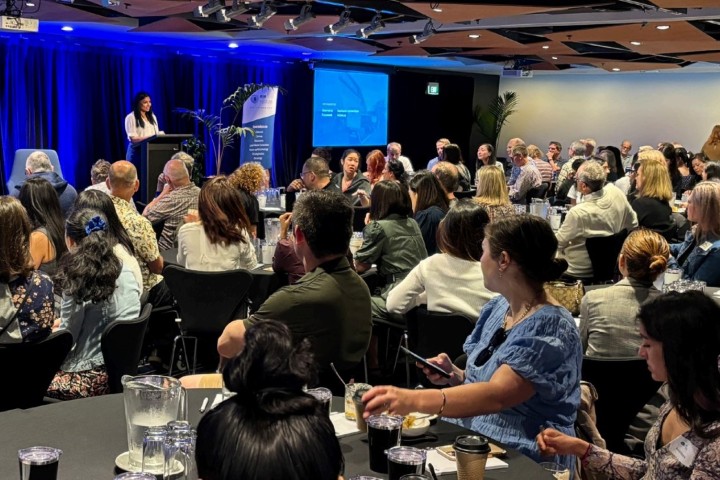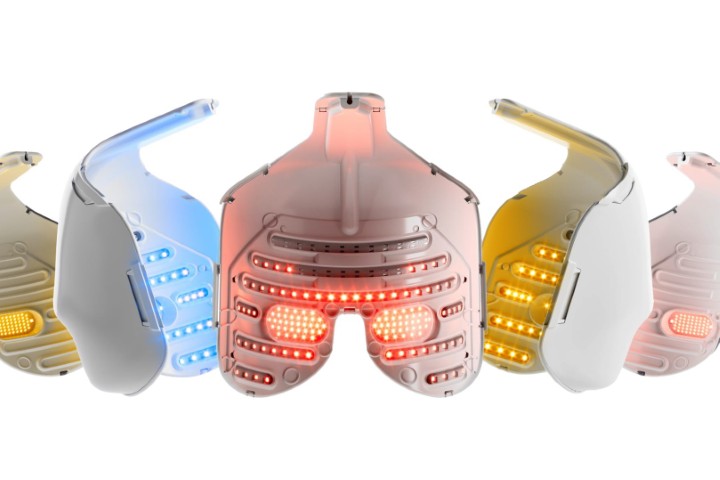Slashing DHB eye patient waitlists, easily!
Perhaps I’m writing this article from the future, but I should really be writing this from the past as this is not a new debate for Chalkeyes, but one which has occupied both sides of this industry for far, far too long, yet still nothing has happened!
Recent media coverage has highlighted the backlog of eye patients within the Southern District Health Board (DHB) and, to a lesser media coverage extent, the Auckland DHB (ADHB). But this is a nationwide problem and demand is growing, not slowing, so it will only get worse wherever you’re based in the country.
Last year the government earmarked an extra $2.2 billion over four years, primarily to help DHB’s better cope with our aging population and record-high immigration. But so far, this extra funding or whatever the DHBs have done with it, doesn’t seem to have helped at all. This year, 4,600 patients in the Southern region were reportedly advised by letter they would have to wait for vital appointments, while the ADHB was said to have more than 10,000 patients overdue for appointments. With all this stress in the health sector, the big question is really, why weren’t some of these patients asked to see their optometrist?
Surely this would be an easy way of prioritising and possibly discharging many of these patients from their respective DHBs rather than risk them going blind while they wait for appointments. So what’s the problem? Because it seems like a very simple solution to Chalkeyes.
Dare I ask if it could be a small minority of ophthalmologists who are perhaps silencing the more open and progressive views of their colleagues? If it is, why would they do this? Do they feel threatened for some reason? Or do they simply feel optometrists are incompetent and would rather use five or more nurse specialists to do the job instead? Whatever it is, it’s not about putting the patient’s needs first as it’s the patients who are losing out, and some are even losing their sight, which is something no good eye health practitioner ever wants to see happen!
There are approximately 700 optometrists in New Zealand, 65% of whom are authorised prescribers, with 2% working within DHBs. On the other hand, there are only 146 ophthalmologists and two nurse practitioners in ophthalmology.
Within DHBs, there is constant expansion of scope for nurse specialists, but none for optometrists. Furthermore, Chalkeyes understands junior doctors (house officers) are allowed to perform certain procedures such as lasers after three months’ experience within ophthalmology (bearing in mind their degree involves a fortnight of ophthalmology observation).
Optometrists are clinicians and should be recognised as health practitioners, with many keen to step up and take on extra training and education to enhance and build on their treatment skills and then, with that extra training, take on far greater roles within DHBs and in the community. Chalkeyes suspects, the issue and ‘red tape’ stopping them take on more of a role could be generational. Optometry has changed greatly over the years yet a few older ophthalmologists perhaps still recall earlier days when optometrists were solely refractionists. New Zealand optometric training is intense and thorough and optometrists need to be utilised to their full potential.
Looking at the Bachelor of Optometry degree curriculum there are numerous aspects of the eye covered. This includes lasers and optics, anatomy and physiology, pathology, pharmacology and prescribing, contact lenses, paediatric and geriatric optometry, and optical dispensing. It is a multifaceted profession. With an intake of approximately 50 students per year, New Zealand’s only optometry school probably churns out more graduates than there are jobs available in New Zealand. Sure, they all eventually find employment, however many of these graduates are attracted away from our shores to higher-paying jobs in Australia, despite our ever-growing waiting lists. Ideally, we should be retaining our own graduates, utilising them to their full potential where they are needed most, and compensating them with fair salaries.
The optometrist’s scope is broad and inclusive rather than specific and restrictive. Nothing is specifically in or out of scope. Scopes are expected to be flexible and develop over time as new competencies are developed by health practitioners within a profession. Looking at the use of nurses in these situations, injecting the eye is not part of the scope of general nursing, but some ophthalmic nurses have been credentialed by the DHB to do injecting under the auspices of their ophthalmology clinical leaders.
Pursuant to the Health Practitioners Competence Assurance (HPCA) Act, the “practice of optometry” includes:
- Prescribing any ophthalmic appliance, optical appliance, or ophthalmic medical device intended for remedial or cosmetic purposes or for the correction of a defect of sight;
- Assessing, diagnosing, treating and managing conditions affecting the eye and its appendages;
- Prescribing medicines whose sale and supply is restricted by law to prescription by authorised prescribers;
- Reporting or giving advice in an ophthalmic capacity, using the knowledge, skills, attitudes and competence initially attained for the primary optometry qualification and built upon in postgraduate and continuing clinical education, wherever there could be an issue of patient health or wellbeing;
- Signing any certificate required for statutory purposes, such as driver licensing eyesight certificates; and
- Holding out to the public or representing in any manner that one is authorised to practise optometry in New Zealand.
How will we cope with age-related pathology if we don’t have the resources? Or should I say (as we have the resources) we refuse to use them? DHB optometrists are particularly well-positioned for scope expansion, while certain services ideally would be spread out to community optometry. After all shared-care models have already been proven to work.
In a similar manner to nurse practitioners, scope expansion for specially-trained DHB optometrists would be within the hospital clinical setting and under an overseeing consultant, allowing them to shoulder a lot more of the clinical-treatment workload. This expanded in-hospital team could then be supported by better assessment and support from community-based optometry.
A bill in Florida is proposing changes to allow optometrists to perform certain laser and non-laser procedures after undertaking and completing a training course and passing an examination to become a “certified optometrist in ophthalmic surgery”. It does prohibit certain procedures, particularly invasive procedures or ones that require general anaesthesia. It would, however, also expand their scope to prescribe certain types of medicine – a step New Zealand took many years ago. In New Zealand, optometrists are authorised prescribers and within their scope of practice they are equal under the law to medical practitioners.
So, once again, this seems like a simple answer to today’s current waiting-list woes. Increase optometrists’ scopes and improve shared-care services so ophthalmologists can make better use of their valuable time, patients are seen sooner and the risk of anyone going blind because no one’s looking after them is, if not eradicated, significantly reduced! This is the only way forward and I am confident it will happen.
So, come on guys, put past prejudices behind you. Think of the patient and let’s finally take the steps needed to really provide a modern, world-class eye care model. Vive la révolution!
Letters to the editor
In response to the above column, NZ Optics received the following letters.
Response to ‘Chalkeyes: Slashing DHB eye patient waitlists, easily!’ in Sept ’17 issue
Chalkeye’s article on DHB waitlists is topical. I do not wish to comment on the motives of various parties on how care is delivered now or in the future, but I think there are larger challenges to change.
Privately-funded, shared ophthalmology-optometry glaucoma care is well established. This is based on mutual patients and an understanding of the skills and roles of both clinicians and clear communication between the two. Moves are underway in some DHBs, including Auckland, Counties Manukau and Hawke's Bay, to better involve optometrists in glaucoma care and management. The approaches in different locations highlight the challenges to optometry being part of improved access and shared care.
Our DHB eye clinics have independent, experienced and skilled ophthalmologists managing patient care. Ophthalmologists develop and follow personal guidelines for reviews. Glaucoma diagnosis can be difficult to pin down and may vary between practitioners. A patient may be a ‘suspect’ or diagnosed with glaucoma - the difference between the two is not always clear cut. In both cases, a patient needs ongoing monitoring. Currently continuity and quality of care is a function of the patient returning to the ophthalmology eye clinic. Some patients can be seen by specialist nurses, but this is supervised and managed by ophthalmology.
So, it was inspiring to hear the work of Hawkes Bay ophthalmologist Dr Alex Buller at the recent Glaucoma NZ Symposium. Dr Buller has initiated a programme of shared glaucoma care. His approach is rich in common sense, tackling the hurdles to shared-care with a clear set of guidelines. One early challenge was generating a list of diagnosed and stable glaucoma patients, especially as most eye clinics are not set up with patient coding systems.
Thus, involving optometrists in DHB-delivered eyecare may occur more quickly in smaller centres, which can be more agile, with success championed by innovators who drive change.
The NZ National Eye Centre is offering an 80-hour Advanced Glaucoma Training programme for optometrists, while the ADHB has signalled its intention to involve credentialed optometrists in the care of diagnosed and stable glaucoma patients. This still requires a master list of suitable patients as well as an understanding of optometrist capabilities. In large clinics with many ophthalmologists this will present a challenge at the system level. Will sufficient patient numbers be selected for community optometric management?
Although ophthalmologists and optometrists have many clinical skills in common,
ophthalmologists have significantly more training involving residency and thus supervised practice. This is core to their specialty and also the basis underlying the way clinics have been run in the past. To outsource parts of clinical care requires robust, well-considered protocols (usually) supported by epidemiological evidence.
The Auckland region ophthalmology services glaucoma referral form is a step towards improving the sensitivity and quality of incoming referrals. Clarifying important clinical features, which indicate ophthalmology input is needed is also useful.
Optometry is ready and eager to participate in delivering improved access to glaucoma care and this optometrist is hopeful about the possibilities in the future.
A New Zealand optometrist. Name supplied
Whilst Chalkeyes writes there is a very simple solution to decreasing the risk of patients “going blind” while waiting for appointments at DHB’s and that is to discharge them to optometrists, I believe this is an overly simplistic view. No doubt this was written with the best of intentions, but it is an adversarial article undermining the roles of both ophthalmologists and ophthalmic nurses. We need to work together to achieve any long-term resolution to what is a growing problem given our aging population and the undeniable relationship of eye disease and aging. Unfortunately holding a professional qualification alone, does not necessarily endow an individual with insight, experiential knowledge, and managerial skills. Experience over time is required to gain the clinical proficiency required in the clinical setting.
I write from a nursing perspective, with more than 25 years’ experience in ophthalmology in New Zealand in both clinical and managerial roles. I have been involved with many of the innovations that have been implemented at Auckland District Health Board both from a nursing and optometry perspective.
Historically nurses and doctors have worked together with mutual trust between the professions. Their professional education prior to registration also provides wide knowledge of the whole body and disease processes, prior to specialising in ophthalmology. Chalkeyes highlights the Bachelor of Optometry degree curriculum includes many aspects of the eye including: lasers and optics, anatomy and physiology, pathology, pharmacology, prescribing, contact lenses, paediatric and geriatric optometry. However, a key question is how much of the curriculum involves other systems of the body as many ophthalmic conditions have a systemic component and how much is didactic rather than “hands-on”.
Whilst nurses have expanded their practice over the last 15 years they have ‘earned’ this role expansion by completing post-graduate education and supervised clinical practice leading to credentialing. There are also governing bodies such as the Nursing Council and within hospitals - Clinical Practice Committees that have to approve these expanded roles so they are completed with much forethought and planning.
Chalkeyes states that “within DHB’s there is a constant expansion of scope for nurse specialists, but none for optometrists”. However, he/she appears to forget to mention there are a number of DHB’s that have greatly expanded practice for optometrists in glaucoma - Southland DHB (Invercargill and Dunedin) and CMDHB. Also in ADHB, optometrists have expanded roles and are much-valued members of the multidisciplinary team. They work independently in the emergency eye service alongside nurse practitioners, nurse specialists and junior doctors/registrars and collaboratively with doctors and nurses in many specialist clinics: glaucoma, cataract, diabetes/medical retina and cornea. Optometrists also run independent specialist contact lens clinics and collaborative orthoptist/optometrist clinics within the ADHB.
Over the last few years, I have also been involved in setting up a post-graduate glaucoma course within the ophthalmology department at the University of Auckland (UoA) in collaboration with the ADHB and the School of Optometry and Vision Science. To date, 12 optometrists have been credentialed to provide care for patients independently. The ADHB is in the process of contracting-out glaucoma patients within their service to community-based optometrists. Meantime, the credentialed optometrists currently have a clinic within the UoA until the logistics have been worked through for the funding of ADHB patients in the community.
Sue Raynel, MA, BHSc, OND, RGON


























